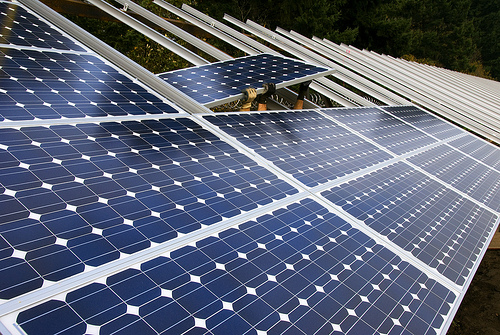 This is part of a series on distributed renewable energy. It originally appeared on Energy Self-Reliant States, a resource of the Institute for Local Self-Reliance’s New Rules Project.
This is part of a series on distributed renewable energy. It originally appeared on Energy Self-Reliant States, a resource of the Institute for Local Self-Reliance’s New Rules Project.
The California Public Utility Commission (CPUC) officially launched its Renewable Auction Mechanism (RAM)* last week, to spur more development in renewable energy projects smaller than 20 megawatts.
The good and bad news is summarized quite well by the FIT Coalition, with the good news being:
- A strong focus on the < 20 megawatt market segment, also known as Wholesale Distributed Generation if the project connects to the distribution grid.
- Recognizes value of “locational benefits,” rewarding projects that site close to load to avoid unnecessary transmission expenditures — “(massive capital expenditures, decade-long build-outs, and significant line and congestion losses)”
- Requires utilities to provide specific grid details to help developers select project sites before they commit.
Points 1 and 2 highlight an increasingly recognized issue: Meeting the near-term benchmarks in state renewable energy standards may be impossible if states rely on centralized, transmission-dependent projects. Sub-20-megawatt projects can quickly sum to large quantities of renewable energy, capture most economies of scale, and come online much faster that large, centralized projects.
Point 3 is huge, as well, because it finally addresses a market failure where distributed energy project developers could not get information about grid “sweet spots” for plugging in smaller scale renewable energy without significant infrastructure upgrades. It’s an issue too rarely discussed, with a rare exception being our 2008 report on Minnesota’s potential to meet its state RPS without significant new high-voltage transmission lines (backed by two state-sponsored studies).
The bad news is that the CPUC missed several opportunities to maximize the potential for distributed generation:
- It allows participation by transmission-connected projects, which will not carry the same advantages as distribution-connected projects — “producing energy close to load and avoiding the significant costs, timeframes, and environmental issues associated with transmission.”
- It institutes a lop-sided playing field that will favor well-established companies and larger projects.
- It perpetuates the high failure rate of solicitation programs: “In general, California’s solicitation-based RPS programs result in more than 95 percent of the bid capacity to be rejected by the utilities or to be abandoned by developers in the end due to underbidding.” These rejections lead to enormous stranded development costs, as much as $100 million in one solicitation.
Despite the bad news, it’s a promising “pilot” program that will support one gigawatt of distributed renewable energy. Let’s hope it improves with time.
*And folks suggest feed-in tariff is a lousy policy name … Speaking of which, a number of media stories indicate that this is California’s take on a “feed-in tariff.” That’s like saying like soccer is Europe’s take on American football. One is an auction, the other is a standard contract with prices based on the cost of generation.



